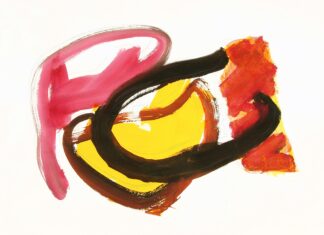A bartender kit, also known as a bar kit or cocktail kit, is an indispensable toolset for professionals and enthusiasts in the world of mixology. These kits are carefully curated collections of essential tools and equipment that empower bartenders to craft a wide variety of cocktails with precision and style. In this comprehensive exploration of bartender kits, we will delve into the intricate details of what makes up these kits, their functionalities, the significance they hold in the realm of bartending, and how they have evolved over time.
Bartender Kit: The bartender kit, often referred to as a bar kit or cocktail kit, is an essential ensemble of tools and equipment used by bartenders to create, mix, garnish, and serve a diverse range of cocktails and beverages. These kits are not only the hallmark of professionalism behind the bar but also the key to crafting exquisite cocktails that tantalize the palate and engage the senses.
Bartender Kit: Bartending is both an art and a science, and a well-equipped bartender kit is the artist’s palette and laboratory. Whether you’re a seasoned bartender with years of experience or an aspiring mixologist just starting on your cocktail journey, a bartender kit is your trusted companion. These kits are designed to streamline the cocktail-making process, ensuring accuracy, efficiency, and consistency in every drink prepared.
Bartender Kit: The components of a bartender kit are carefully selected to cover a wide spectrum of tasks, from measuring and muddling to shaking and straining. Each tool serves a specific purpose, contributing to the creation of a perfectly balanced cocktail. Let’s embark on a journey through the elements that constitute a typical bartender kit, understanding the significance of each and how they harmonize to elevate the art of mixology.
1. Shaker: The shaker is the workhorse of any bartender kit. It comes in various styles, with the most common being the two-piece Boston shaker and the three-piece cobbler shaker. The Boston shaker consists of a mixing glass and a metal tin, while the cobbler shaker includes a metal tin with a built-in strainer and a cap. Bartenders use shakers to combine ingredients, chill them, and create aeration, resulting in a well-mixed and balanced cocktail. The choice between Boston and cobbler shakers often comes down to personal preference, as both are effective tools in the hands of a skilled bartender.
2. Jigger: Precision is paramount in mixology, and a jigger ensures that each cocktail is crafted with meticulous accuracy. Jiggers come in various shapes and sizes, typically measuring both one and two ounces, or sometimes in milliliters. These measuring cups help bartenders pour the exact amount of each ingredient, ensuring consistency in taste and potency. A jigger is an indispensable tool for mastering the art of mixology, as it allows bartenders to create cocktails that are not only delicious but also well-balanced.
3. Mixing Glass: A mixing glass is a staple in many bartender kits, particularly for those who favor the Boston shaker. It serves as the vessel for stirring cocktails rather than shaking them. Stirring is essential for drinks like martinis and Negronis, where achieving the right level of dilution and clarity is crucial. Mixing glasses are often crafted from thick, durable glass and have a long, elegant shape that accommodates stirring with a long-handled bar spoon.
4. Bar Spoon: The bar spoon is an elongated, spiral-handled tool designed for stirring cocktails in a mixing glass. It plays a vital role in the gentle and precise mixing of ingredients without disrupting the texture or clarity of the drink. Many bar spoons also feature a flat end, which can be used for layering cocktails by pouring liquids gently over the back of the spoon. This technique is commonly employed in cocktails like the classic Pousse-Café.
5. Muddler: When it comes to cocktails that incorporate fresh herbs, fruits, or sugar cubes, a muddler is an indispensable tool. This sturdy, handheld implement is designed for gently mashing or muddling ingredients at the bottom of a glass or shaker. By doing so, it releases essential oils, flavors, and aromas, infusing the cocktail with a burst of taste and fragrance. Muddlers are commonly used in classics like the Mojito and Old Fashioned.
6. Strainer: To ensure that no unwanted ice shards, fruit pulp, or herbs make their way into the final cocktail, bartenders employ a strainer. There are two primary types of strainers found in bartender kits: the Hawthorne strainer and the julep strainer. The Hawthorne strainer, with its coil-like design and flat, perforated surface, fits snugly atop a mixing tin or glass, allowing bartenders to strain the cocktail while retaining ice and other solids. In contrast, the julep strainer, a more elegant and traditional option, is typically used for stirred cocktails and fits neatly inside a mixing glass.
7. Citrus Juicer: Many cocktails rely on fresh citrus juice for their bright and zesty flavors. A citrus juicer, often included in bartender kits, enables bartenders to extract the juice from lemons, limes, and oranges with ease and efficiency. Whether you’re crafting a classic Margarita or a refreshing Daiquiri, the citrus juicer ensures that your cocktails burst with the vibrant essence of freshly squeezed citrus.
8. Ice Tongs: While seemingly straightforward, ice tongs play a vital role in maintaining hygiene and presentation behind the bar. They allow bartenders to handle ice without touching it directly, reducing the risk of contamination. Ice tongs also enable precise placement of ice cubes or spheres in cocktail glasses, ensuring that each drink is served at the perfect temperature and dilution level.
9. Ice Bucket: The ice bucket, often included in bartender kits, serves as a convenient and aesthetically pleasing vessel for storing ice. It keeps ice cubes or crushed ice readily accessible, allowing bartenders to work efficiently without the need to make frequent trips to the freezer. Moreover, an ice bucket can be an attractive addition to the bar setup, enhancing the overall ambiance of the space.
10. Garnish Tools: Elevating a cocktail’s visual appeal and aroma, garnishes are a hallmark of mixology. Bartender kits often include various garnish tools, such as fruit zesters, peeler knives, and channel knives. These tools enable bartenders to create intricate garnishes, like citrus twists and decorative fruit peels, that add a touch of elegance and flair to the finished drink.
11. Bottle Opener: For cocktails that incorporate bottled beverages, such as beer or tonic water, a bottle opener is a must-have tool. It simplifies the process of opening bottles swiftly and efficiently, ensuring that bartenders can seamlessly incorporate these ingredients into their creations.
12. Corkscrew: When crafting cocktails that call for wine or fortified wines like vermouth, a corkscrew is essential. It allows bartenders to extract the cork from wine bottles smoothly and without damaging the seal, ensuring that the wine remains fresh for future use.
13. Bar Mat: A bar mat is a practical addition to a bartender kit, as it provides a non-slip surface for mixing and serving cocktails. It also helps contain spills and drips, maintaining a clean and organized workspace behind the bar.
In conclusion, the bartender kit stands as an indispensable companion for both seasoned professionals and aspiring mixologists in the art of crafting cocktails. Comprising a carefully selected array of tools and equipment, these kits empower bartenders to create, mix, garnish, and serve an extensive range of beverages with precision and style. From shakers and jiggers that ensure accurate measurements to muddlers and strainers that release flavors and maintain clarity, each component of the bartender kit plays a pivotal role in elevating the craft of mixology.


















